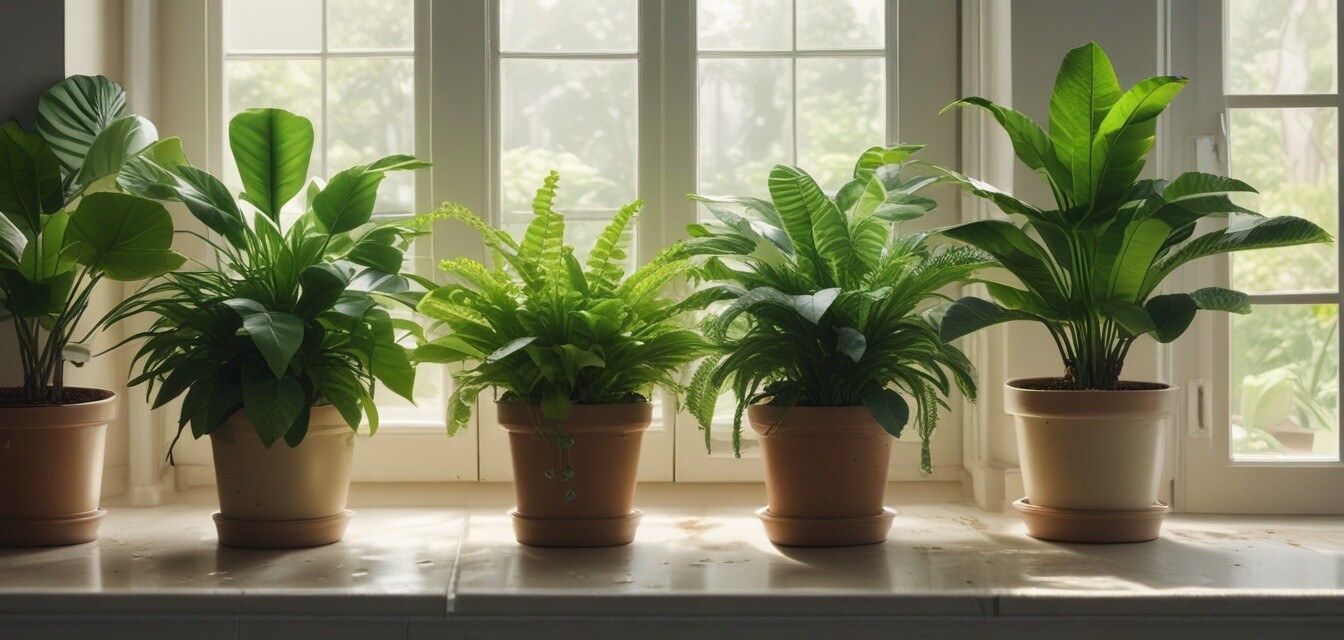
How to Manage Temperature Fluctuations for Your Plants
- Understanding temperature requirements is crucial for healthy houseplants.
- Most indoor plants thrive between 65°F and 75°F (18°C - 24°C).
- Directly monitoring temperature changes can prevent stress and damage to plants.
- Utilizing tools and practices can help stabilize the indoor environment.
Temperature fluctuations can significantly affect the health and growth of your houseplants. These changes can stress the plants, leading to problems such as wilting, leaf drop, or even death in severe cases. This guide covers essential tips for maintaining a stable environment for your indoor greenery.
Understanding temperature preferences for various houseplants
Different houseplants have specific temperature needs which are important to understand for successful growth.
| Plant Type | Ideal Temperature Range (°F) | Temperature Sensitivity |
|---|---|---|
| Succulents | 70 - 80 | Moderate |
| Ferns | 60 - 75 | High |
| Spider Plant | 65 - 75 | Low |
| Pothos | 65 - 85 | Moderate |
| Tropical Plants | 70 - 85 | High |
How temperature fluctuations affect houseplants
Plants can respond negatively to sudden changes in temperature. Here’s how:
- Wilting: Sudden heat can cause plants to lose moisture rapidly.
- Leaf Drop: Cold drafts can shock plants, causing leaves to drop.
- Slow Growth: Consistent temperatures aid in optimal growth; fluctuations may halt it.
- Pest Infestation: Stressed plants can become more susceptible to bugs.
Tips for managing temperature fluctuations
To ensure that your plants thrive despite temperature variations, consider the following tips:
Practical measures
- Use a Thermometer: Keep an indoor thermometer to monitor temperatures regularly.
- Avoid Direct Drafts: Position plants away from windows or doors that can cause drafts.
- Group Plants Together: This can create a microclimate, helping to maintain consistent humidity and temperature.
- Insulate Windows: Use thermal curtains or window film to minimize heat loss.
- Consider Grow Lights: If temperatures are low, grow lights can provide warmth as well as light.
Temperature monitoring tools
In addition to being mindful of your surroundings, invest in tools that help you maintain optimal conditions:
| Tool | Function |
|---|---|
| Digital Thermometer | Accurately measures indoor temperature. |
| Humidity Meter | Helps you monitor the moisture levels in the air. |
| Soil Moisture Meter | Indicates when to water, preventing stress from both over and underwatering. |
Common mistakes to avoid
Watch out for these common temperature-related issues:
- Placing plants in extreme temperatures: Avoid areas that get overly hot or cold, like near radiators or air conditioning vents.
- Ignoring humidity: Dry air can exacerbate temperature issues, so consider using a humidifier.
- Sudden temperature changes: Avoid moving plants from cold outdoor conditions to warm indoors abruptly.
Conclusion
By understanding your plants' temperature requirements, monitoring conditions, and taking proactive measures, you can significantly improve the health of your houseplants and ensure they thrive in your home. For more detailed plant care resources, check out our Care Tips section!
Pros
- Stable temperatures promote healthy growth.
- Increased resistance to pests and diseases.
- Better overall aesthetic of plants.
Cons
- Restricting plant movement can be inconvenient.
- Requires initial investment in monitoring tools.

